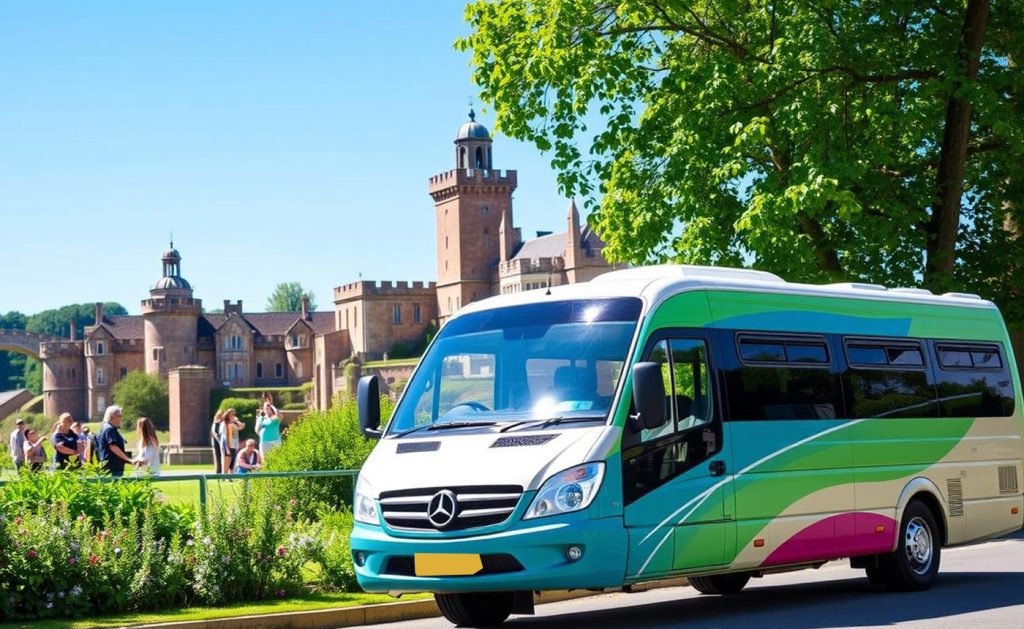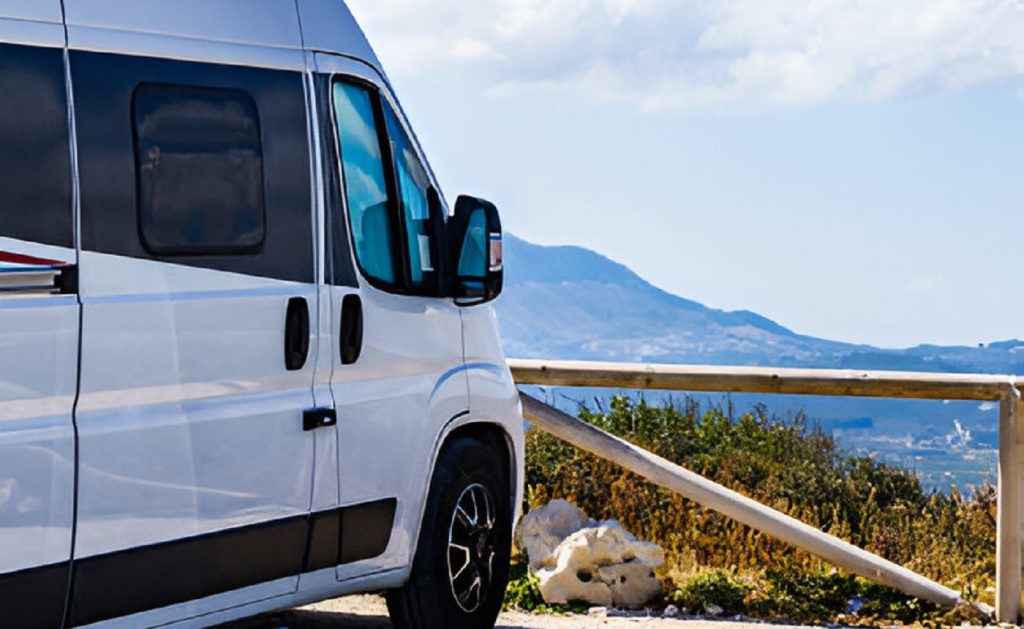You have passengers, and it’s heavier and longer than a car! However, if you adhere to our minibus safety guidelines, you’ll be prepared for a school trip that is (almost) stress-free.
Do you have a school trip planned? Will you be taking a minibus for the trip?
It’s normal to feel nervous, so don’t worry. It’s difficult to keep a large number of children safe and under control, whether you’re the minibus driver or not.
We are here to assist, which is wonderful news. To help teachers and drivers (and teacher-drivers) get from point A to point B and back safely, we’ve put together this list of tips.
Remember that nothing in this page should be interpreted as legal advice; we are merely offering basic guidance. We are here to help you make the correct choices, but before anything else, you should follow the law and school rules.
Now let’s move on to the risk analysis.

Start with a risk assessment
Do a risk assessment before your travel, make emergency plans, and make sure you have the right insurance and first aid coverage.
Online resources offer a variety of risk assessment templates, such as this one from Essex Minibus Hire and another from The School Travel Company. But keep in mind that they are only suggestions and could not be all-inclusive.
Get the ideal teacher-to-student ratio.
How many adults are needed to keep an eye on a class of unruly children?
No, it’s not a joke about Christmas crackers. It’s crucial to get it right because it’s a significant factor in any school excursion.
The Department of Education’s publication, Health and Safety of Students on Educational Visits, suggests:
- Year 1–3 students have one adult for every six students.
- In years 4–6, there is one adult for every ten students.
There is no legal requirement for certain staff-to-school excursion ratios. However, given that one must drive without distraction, a risk assessment will establish whether additional adult assistants or specialised instructors are necessary.
Take licence restrictions into account.
You must fulfil specific requirements in order to operate a minibus with up to 16 passenger seats on a regular driver’s license (non-D license).
- In order to avoid additional paperwork and medical requirements, you must be at least 21 years old, but not older than 70.
- At least two years must have passed since you obtained your driver’s license.
- Other than out-of-pocket costs, you must be driving freely for social reasons for a non-commercial organisation and not be compensated or given any other consideration for driving. (The “permits” and “hire or reward” sections below explain how convoluted this can get.)
- The minibus’s maximum allowed mass (MAM) cannot exceed 3,500 kg, in addition to the 750 kg of permanently installed special equipment for passengers with disabilities. (This is a one-time use allowance that can only be used to that equipment.)
- You can’t be pulling a caravan, can you?
- This restriction also applies to driving a minibus if the license only permits driving vehicles with automatic transmissions.
You need a D1 licence if you need a minibus with a MAM of more than 3,500 kg (or 4,250 kg with specialised equipment). Look for the number “101” in the D1 column on the back of your licence if it was issued after 1997. You will have to take the D1 driving exam if it isn’t present.
Remember that the aforementioned guidance is only applicable to nonprofit organisations and non-commercial schools. Commercial schools and related organisations could be subject to different regulations. In any event, if you’re not entirely certain of the facts, get independent legal counsel.

Review restrictions on driving for hire or reward
What is a reward or a hire?
This is a fee for paying someone or anything on behalf of someone else. If charging passengers is necessary to pay for your running expenses, gas, or hire, you must apply for a Section 19 minibus permit, which is subject to the following limitations:
- The car can accommodate nine to sixteen people.
- You’re operating it on behalf of a nonprofit that helps the community.
- As a result, the passengers would only be members of that organisation and not the broader population.
- Any fees are not intended for profit but rather to fund operating expenses.
- The driver is at least 21 years old.
Hiring or rewarding someone can have a lot of difficult rules. For example, there is the question of whether private schools are effectively working for hire or reward by charging carers for educational services. A PCV licence is probably needed in situations like this. Once more, if you are unsure, get independent legal advice.
For the most recent information, visit GOV.UK.
Advice on safe driving
-
Take a test drive in the minibus.
It may be wise to schedule a few practice drives if you have never operated a minibus previously. Start your first practice run in a large, empty parking lot or a peaceful place.
Make sure you have adequate vision and are comfortable by adjusting the seat and mirrors. After you’re at ease, try driving in various settings. For instance, you may attempt navigating tight turns, roundabouts, and small lanes by joining carriageways. Being ready is preferable to attempting these movements for the first time while passengers are on board.
-
Take cover!
When entering a multi-story parking lot or approaching low bridges, be mindful of the vehicle’s increased height. Practice passing, keeping in mind that your acceleration will be slower than usual, and be cautious while reversing into a lane.
-
Get comfortable with brakes
Is this really required? Indeed. You will need a greater stopping distance than normal, so pay attention to what’s going on front and adjust your driving to provide plenty of space between you and the car in front of you.
-
Recognise your width
Wider turns will be necessary to prevent climbing the pavement or clipping walls. The best time to practise all of this is when your car is empty.
-
Steer clear of distractions
How can you keep youngsters from getting distracted while operating a minibus?
A bus captain should always be appointed. This might be a responsible senior citizen or another adult educator who will maintain discipline and order so you can focus on driving.
-
Create a journey map
Make sure the route is appropriate for a car of this size by planning ahead and considering other routes in case of traffic jams or diversions.
In this sense, a satnav is usually helpful since it will warn you of any obstacles in your path and keep you aware of the speed limit.
Stop the car safely and alter the satnav if you need to reroute.
Following the establishment of travel schedules, factor in additional time for breaks and schedule your stops, preferably every two to three hours (particularly when travelling youngsters). It will be more exhausting to drive a minibus because it demands greater focus than driving a vehicle.
-
Examine the weather
If required, adjust your travel time based on the weather forecast.
-
Adjust to the new speed restrictions
The speed limitations are known to all of us, right? False!
Minibuses are subject to lower speed limits than vehicles on certain roadways.
The secret to success, like with any new experience, is preparation, which includes hiring from a respectable, knowledgeable company.
More than 15 years ago, Minibus Hire Essex started out as a minibus hire business before branching out to provide various kinds of vehicles. Our professional, kind staff is available to answer any questions you may have and get you the car you need at a cost you can afford. To begin, get in contact.

